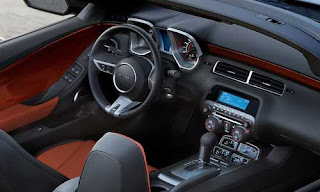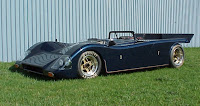For the wiring of your Super Rod, you will need some assembly, but it should be no problem with the help of this detailed guide.
Step 1: To begin, you will need to prepare a basic kit with some wiring and a fuse block.
Step 2: The size of the Alternator will depend on the quantity of the equipped items on your Super Rod as well as their amount of amperage draws.
Step 3: A particular amount of current is required for each chosen component for fusing accordingly for protection. To maintain serviceability, you will need to place the items in an accessible but hidden location properly and away from sources of heat.
Step 4: Select the location of the fuse block first. In this case, the fuse panel will be located behind the side panels built, housed in the trunk for easy access but invisible. A fuse panel support bracket is fabricated on an angle to add to accessibility.
Step 5: The fuse block is attached with the aid of 10/24 stainless steel screws and the wires are ran behind the unit up over the internal wheel house. The wiring will be hidden by the trunk side panels.
Step 6:You can run the main harness through the rocker panel at the qtr panel window opening bottom, by cutting a clearance hole.
Step 7: Create a good entry location back up at the original front kick panel for the under dash wiring.
Step 8: Build a protective saddle below the bottom door hinge which also eliminates metal burrs which may rub the wiring when you going at the installation.
Step 9: Finish off with a trim panel covering the door hinge opening. For protection and to allow the wiring to pass through, on the upper section, incorporate an oval transition flange.
Step 10: For wiring protection while pulling through the panels, you can use a black corrugated conduit. Just fold back the edge and feed the corrugated conduit to the wire. You can use electrical tape to keep the end of the wires from hanging on an edge. It also doubles as an attachment location for rope or pull wire when pulling the wires through.
Step 11: Run the wires through the pre-drilled holes and use a pull string to feed the conduit through the rocker and into the vehicle interior with a pull string.
Step 12: To feed different components, install a main junction block beneath the dash. When it is done, you will see the feeds come off to their respective areas. All soldered connections should be shrink-wrapped.
Step 13: You may want to hide the starter solenoid in places such as behind the door jamb at the passenger front fender at the back.
Step 14: Run some preliminary wires up the dash and mark the sheet metal to aid in keeping track.
Step 15: Measure battery cables from large 1 gauge wire.
Step 16: Rough out the selected knob controls with extra wire so that the correct length can be achieved by trimming after the wiring.
Step 17: Hold the wiring together with clamps and wire ties to align and hide them right.
Step 18: Once the components have been wired and tested, wrap the dash knob harness using electrical tape, or just leave it in case you may want to service it or add a component in the future.
Step 19: For reference quickly and clearly, you can mark each wire to its component using a label maker.
Step 20: You may also need to change a new switch that matches the interior. Disassemble the new switch and fix it onto the original style knob. The bezel and original knob fits, and now you can install it with the new contact assembly.
Step 21: A holding bracket is made and the fuel injection unit's brain mounted in. It is accessible yet safe from heat sources.
Step 22: Some steering columns do not come with emergency flasher systems, if so, you can fabricate one with diodes. If you get stumped on some of these steps, contact your local street rod shop and ask technical questions to help yourself learn.
Finally, try out your completed project to see whether it works when you are ready. Do not wait till the car is done, as it may be too late, and the alterations make more work. If all is well, you are ready to hit the road.
Ensuring your ride is road worthy is what we do in our street rod shop at Jeff Lilly Restorations. Getting you on the road and enjoying your time asap is our goal.





















































